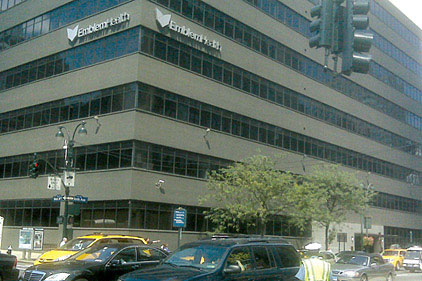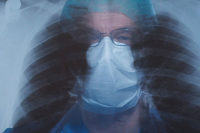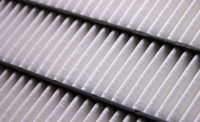
|
|
Flexible cooling equipment helped this hospital upgrade its A/C system with no disruptions. |
You might think, “No big deal, it’s done every day.” New York City, like many large metropolitan areas, is a little bit different from a smaller city like say White Plains, NY, where mechanical systems are generally easier to access. In New York City, replacing a large system often requires demolition, cranes, rigging, and a lot of extra work.
So it was at an Emblem Health facility located in mid Manhattan around 35th and 7th Avenue. The building was erected in the early 1970s, and the mechanical systems have been running for over 25 years. Because it is a hospital, maintaining ideal comfort conditions is critical. The A/C system had to be replaced quickly and with the least amount of disruption to the patients, service providers, and staff.
DELICATE OPERATIONS
Like many tall buildings, space conditioning is done floor by floor rather than by large central units. Many of the systems were installed during the building construction where access was not an issue. Removing the old systems is generally not a problem because the units are disassembled by whatever means available and scrapped. Getting the new units to their installation location is where the fun begins.
The Emblem Health building had four existing units spread out from the basement, main floor, and at an upper level. Sizes ranged to 45 tons and the replacement units would be the same size.
MWSK Equipment is a manufacturer’s rep located on 7th Avenue in lower Manhattan. They service the five boroughs and have had a lot of experience in squeezing air conditioning systems into tall buildings.
“Often the HVAC contractor has to do a lot of preparation work in order to fit an A/C system through small passageways,” said Freddie Taruc, sales manager at MWSK. “Larger units may have to be raised by crane to upper floors and require rigging, permits, and building modification. If they take it through the building, the unit may have to be delivered partially disassembled and then reassembled on site, or walls and doorways opened to allow access.”
Regardless of the entry method, the installation cost can easily exceed the unit’s cost when you measure manhours and special equipment necessary to complete the job. And of course there’s the additional time needed for demolition, installation, and final repairs.
Taruc said they needed to get the replacement units in quickly and with as little building modification as possible. They reviewed their options and selected United CoolAir.
“United CoolAir makes cooling equipment uniquely designed for our market,” said Taruc. “They manufacture a class of air conditioners with many flexible features that not only allow negotiation through narrow doorways and halls but also require no evacuation and charging after installation.”
Tareq Batarseh, P.E., LEED® AP, associate for Robert Derector Associates Consulting Engineers (RDA), is the specifying engineer for the latest Emblem Health project and is no stranger to these kinds of retrofit installations.
“Each room has its challenges, some rooms have height restrictions and width restrictions,” said Batarseh. “United CoolAir units have the ability to connect to existing piping and ductwork with minimal modifications.”
He likes the flexibility in United CoolAir’s system design and their ability to modify the cabinet sizes as needed, two major reasons why they are an approved manufacturer for Emblem Health.
Health care facilities, unlike most commercial buildings, are generally active 24 hrs each day. The retrofit was scheduled for two weekends, with two units replaced each weekend.
WEEKEND WORK
The old equipment was removed on each Friday and the replacement units brought in with minimal interference with the hospital’s operations. The modular sections were quickly reassembled and connected to the existing hookups. Since the units were pre-charged at the factory, brazing, evacuation, and charging in the field were eliminated to save many hours of valuable labor. The units were operational by Monday morning at the start of the new week.
This latest installation went smoothly, much to the credit of the easy-to-handle modular units, resealable refrigerant connections, and factory charged sections. ES





